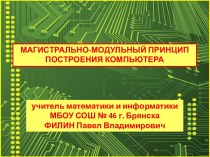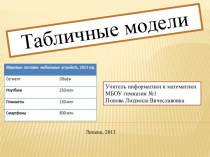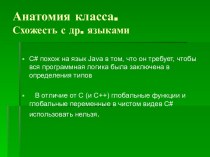- Главная
- Разное
- Бизнес и предпринимательство
- Образование
- Развлечения
- Государство
- Спорт
- Графика
- Культурология
- Еда и кулинария
- Лингвистика
- Религиоведение
- Черчение
- Физкультура
- ИЗО
- Психология
- Социология
- Английский язык
- Астрономия
- Алгебра
- Биология
- География
- Геометрия
- Детские презентации
- Информатика
- История
- Литература
- Маркетинг
- Математика
- Медицина
- Менеджмент
- Музыка
- МХК
- Немецкий язык
- ОБЖ
- Обществознание
- Окружающий мир
- Педагогика
- Русский язык
- Технология
- Физика
- Философия
- Химия
- Шаблоны, картинки для презентаций
- Экология
- Экономика
- Юриспруденция
Что такое findslide.org?
FindSlide.org - это сайт презентаций, докладов, шаблонов в формате PowerPoint.
Обратная связь
Email: Нажмите что бы посмотреть
Презентация на тему ITIL Introduction and Overview. (Week 1)
Содержание
- 2. Overview ITIL – An Introduction Key Concepts Service ManagementITIL Service Life Cycle
- 3. What is ITIL? - I Systematic approach
- 4. What is ITIL? - II ITIL (IT
- 5. What about V3? ITIL started in 80s.
- 6. 5 Core BooksService StrategyService DesignService TransitionService OperationContinual Service Improvement
- 7. Why ITIL Service Management? Best Practice Non-Proprietary/Non-Prescriptive Guidance, not regulations Innovative
- 8. Good Practices v.s. Proprietary Knowledge
- 9. Benefits of ITIL to the IT ProviderService
- 10. Benefits of ITIL to the CustomerFocus on
- 11. Some Key Concepts
- 12. Key Concepts :: Service Service delivers value
- 13. Key Concepts :: Service Level Measured and
- 14. Key Concepts :: Service Level Agreement (SLA)Written
- 15. Key Concepts :: Configuration Management System (CMS)Tools
- 16. Key Concepts :: ReleaseCollection of hardware, software,
- 17. Key Concepts :: IncidentUnplanned interruption to an
- 18. Key Concepts :: Work AroundReducing or eliminating
- 19. Key Concepts :: ProblemUnknown underlying cause of one or more incidents
- 20. Key Concepts :: ResourcesResourcesThings you buy or pay forIT Infrastructure, people, moneyTangible Assets
- 21. Key Concepts :: CapabilitiesCapabilitiesThings you growAbility to carry out an activityIntangible assetsTransform resources into Services
- 22. Service Management
- 23. ServiceCustomerTransfer costs and Risks Retains focus and
- 24. What is Service Management?A set of specialized
- 25. CapabilitiesResourcesService AssetsServicesCustomer AssetsBusiness OutcomesPerformanceValue
- 26. 4 Ps of Service ManagementPeople – skills,
- 27. Service Lifecycle
- 28. Service Life Cycle (SLC) To sustain high
- 29. How the Lifecycle stages fit together
- 30. SLC :: Service Strategy Purpose Ensuring that
- 31. Service Strategy has four activities
- 32. SLC :: Service DesignPurpose Converting the strategy
- 33. Processes in Service Design Availability Management Capacity
- 34. SLC :: Service Transition Key Purpose To
- 35. Good Service Transition Set customer expectations Enable
- 36. SLC :: Service Operation Maintenance Management Realises Strategic Objectives and is where the Value is seen
- 37. Processes in Service Operation Incident Management Problem Management Event Management Request Fulfilment Access Management
- 38. Functions in Service Operation Service Desk Technical Management IT Operations Management Applications Management
- 39. Service Operation Balances
- 40. SLC :: Continual Service Improvement Focus on
- 41. Service Measurement Technology (components, MTBF etc) Process
- 42. 7 Steps to Improvement
- 43. Скачать презентацию
- 44. Похожие презентации
Overview ITIL – An Introduction Key Concepts Service ManagementITIL Service Life Cycle
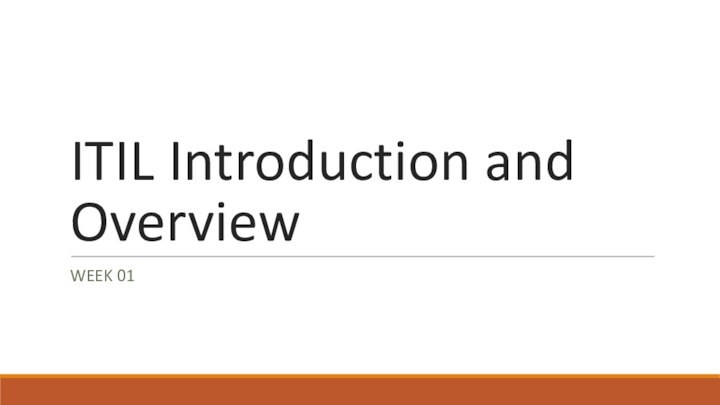
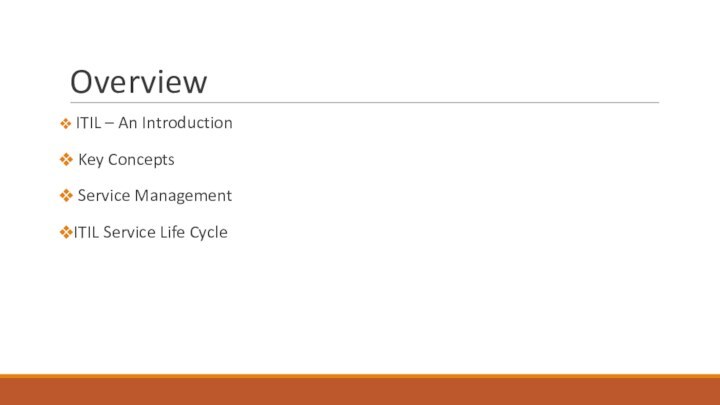

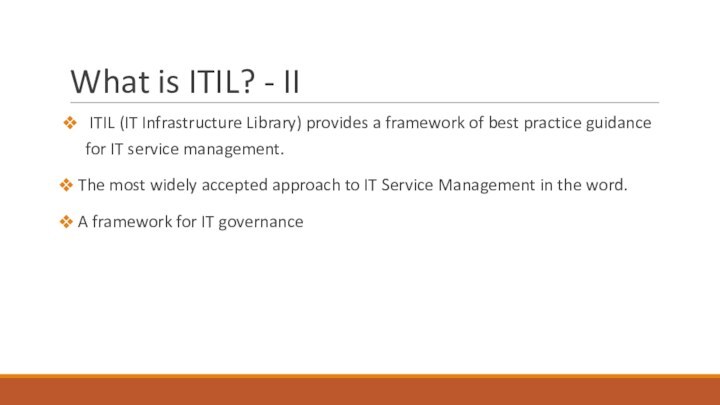
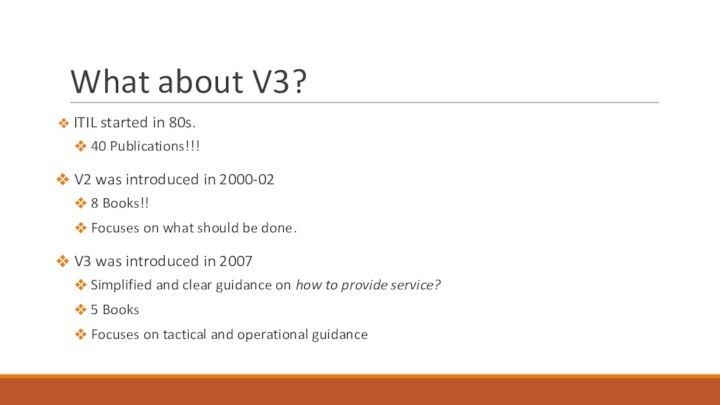
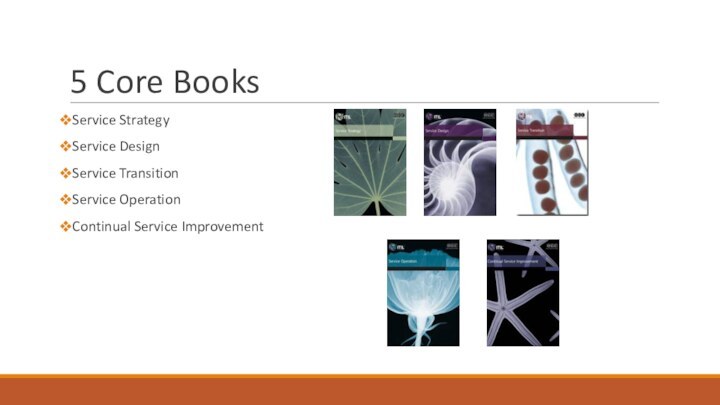
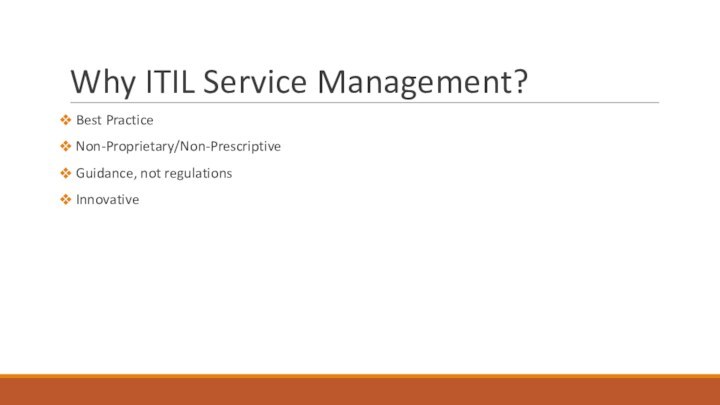
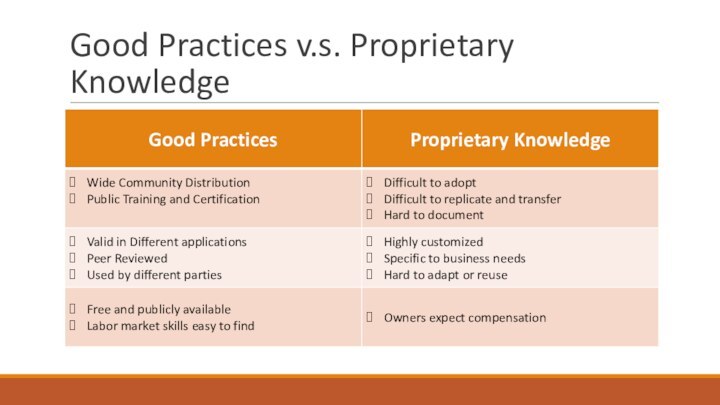
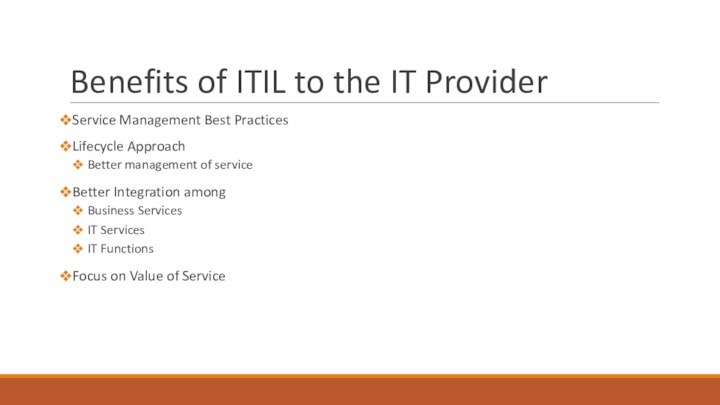
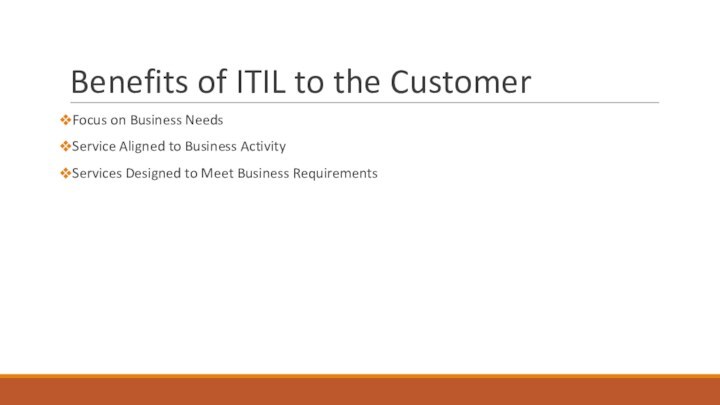
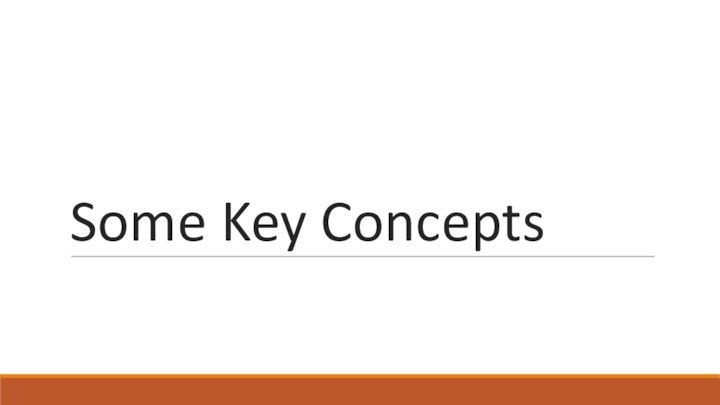
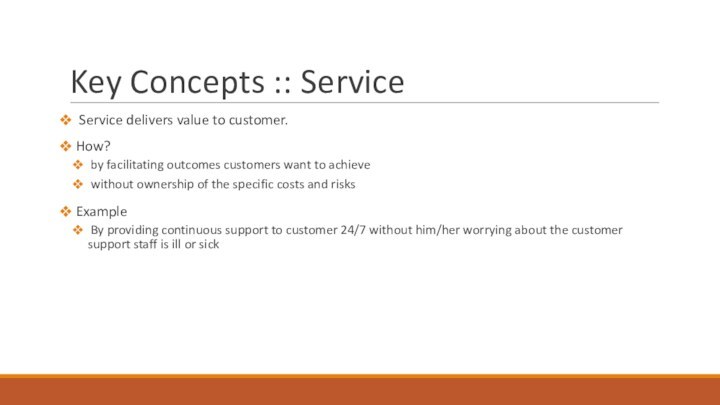

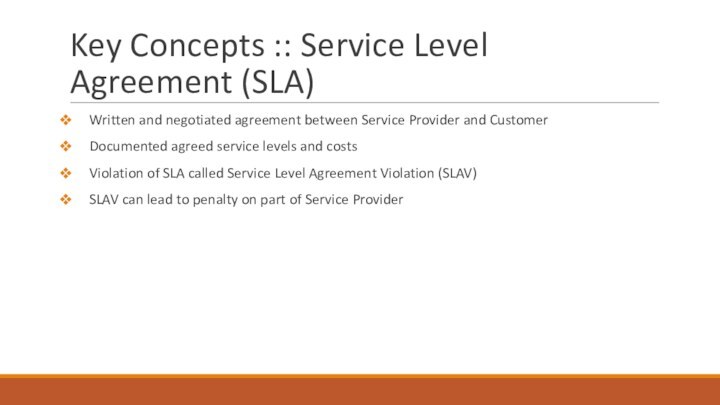
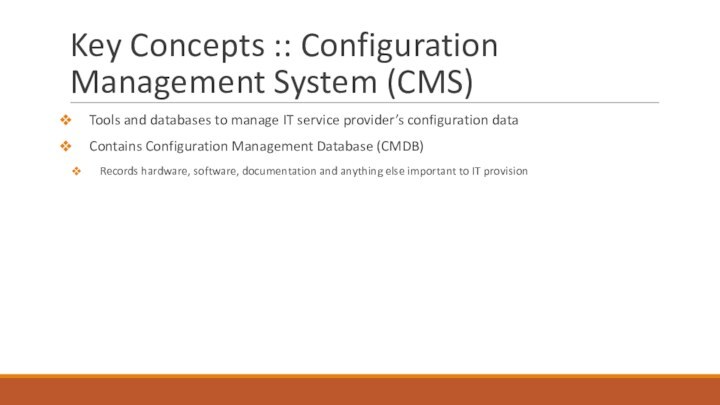
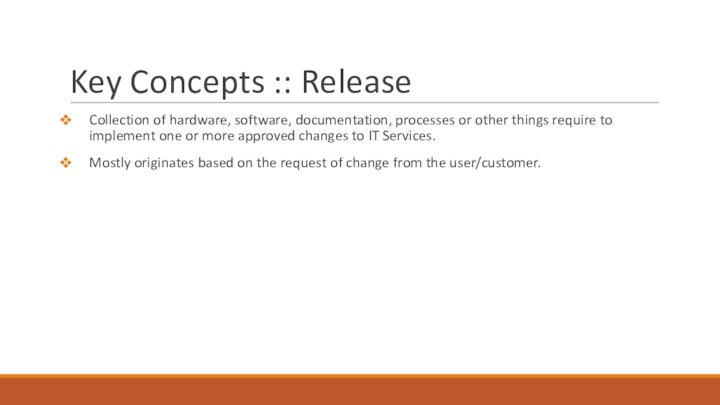
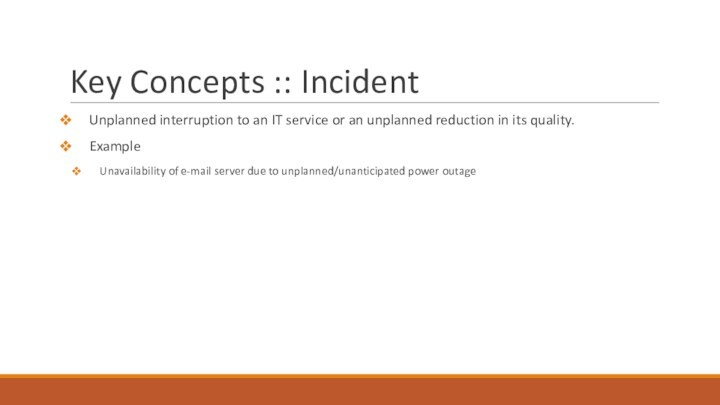
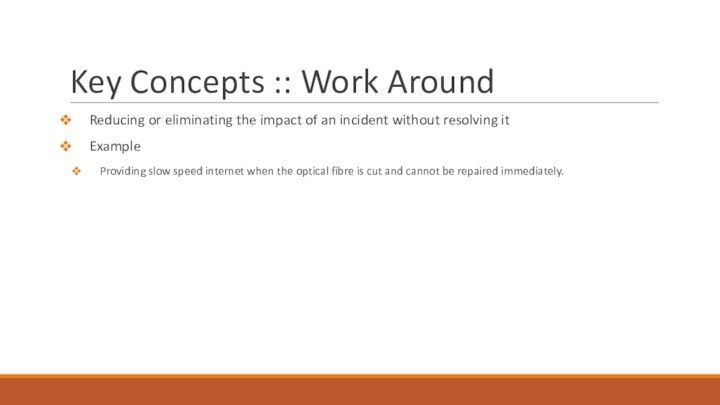
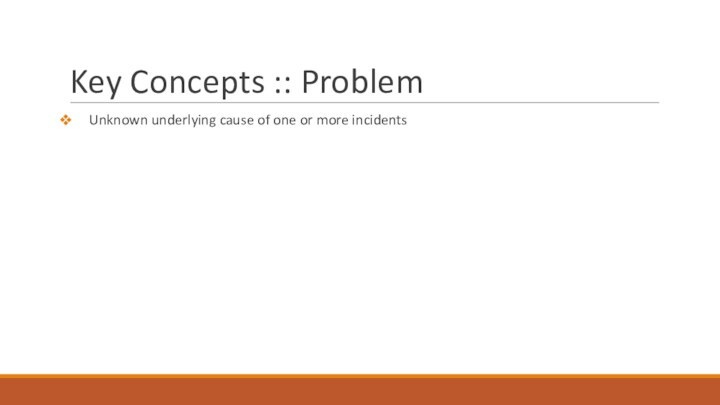
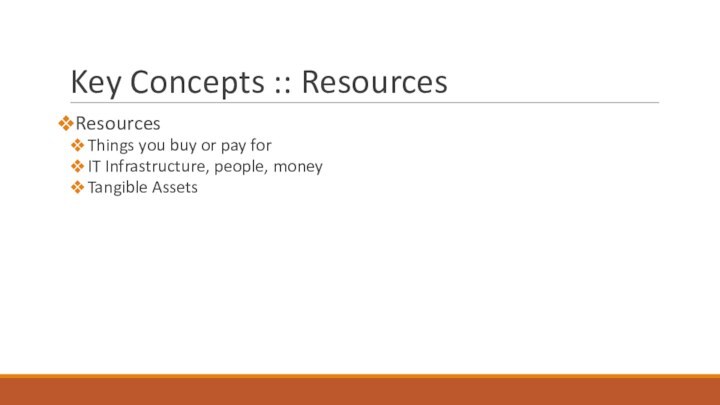
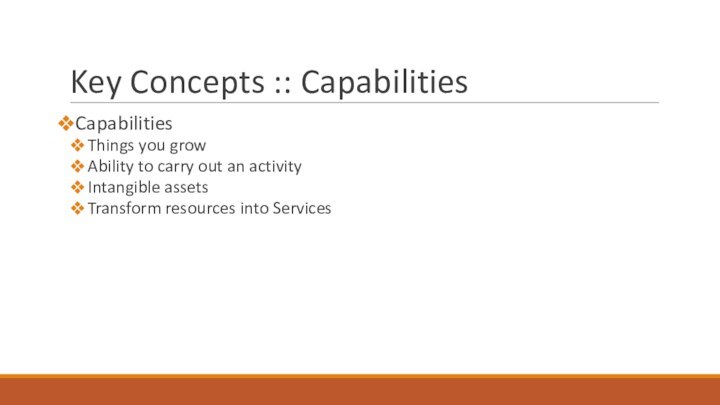



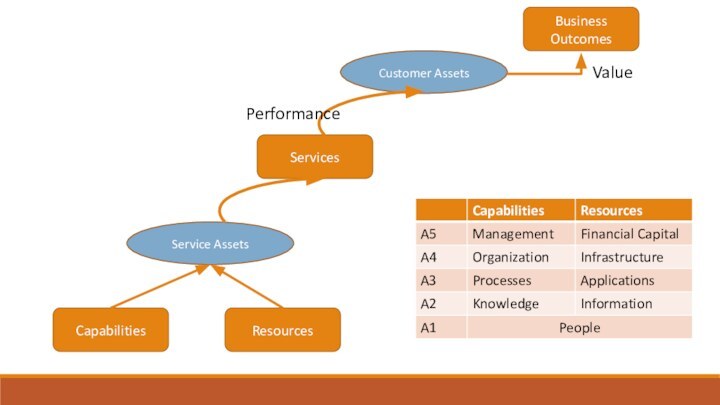
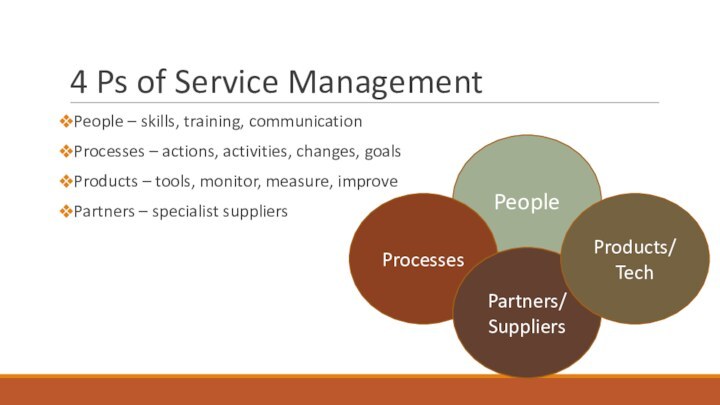
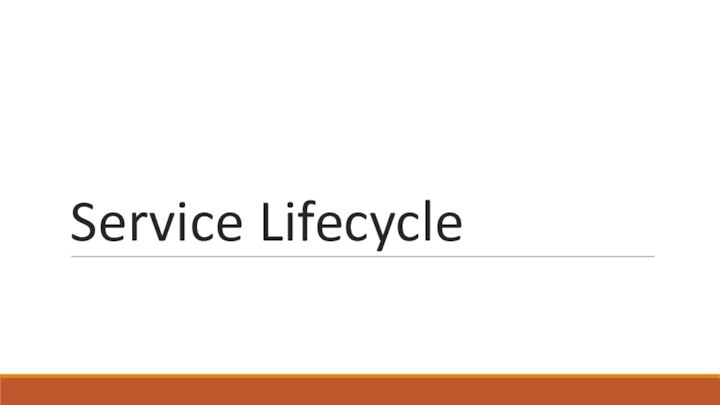
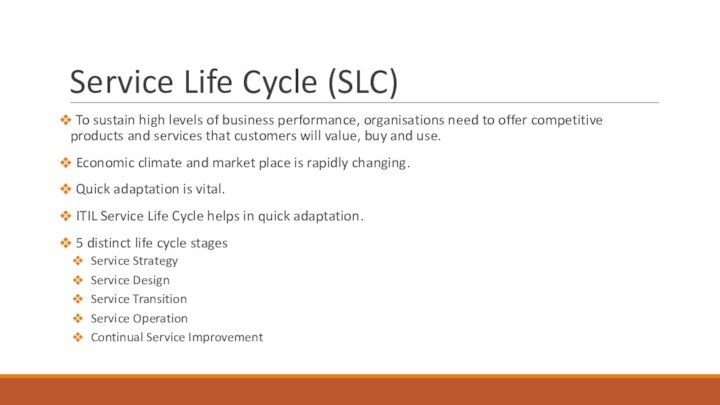
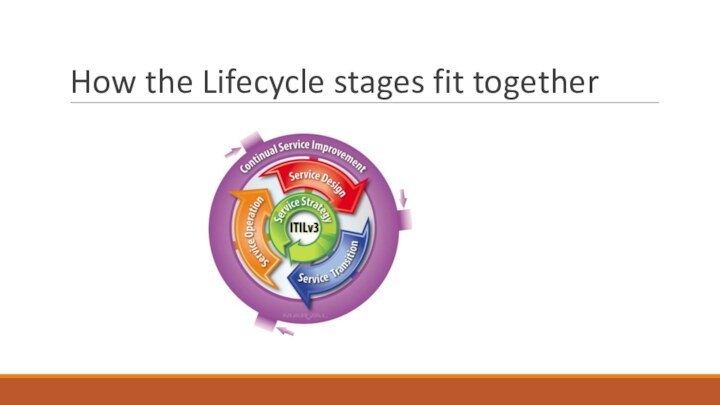
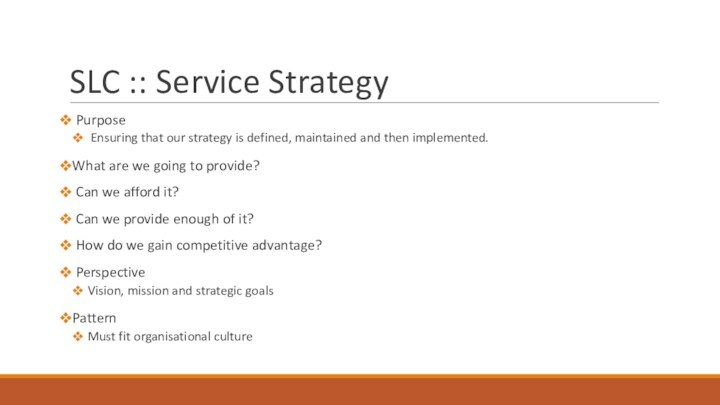
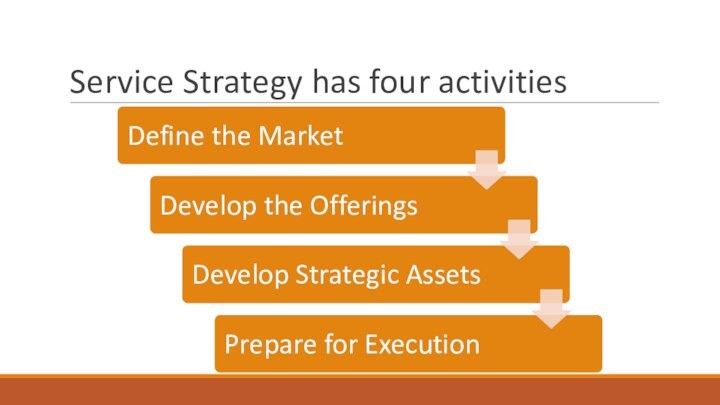
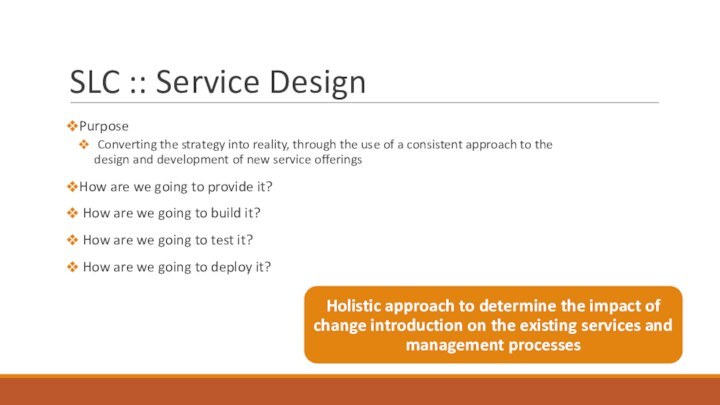
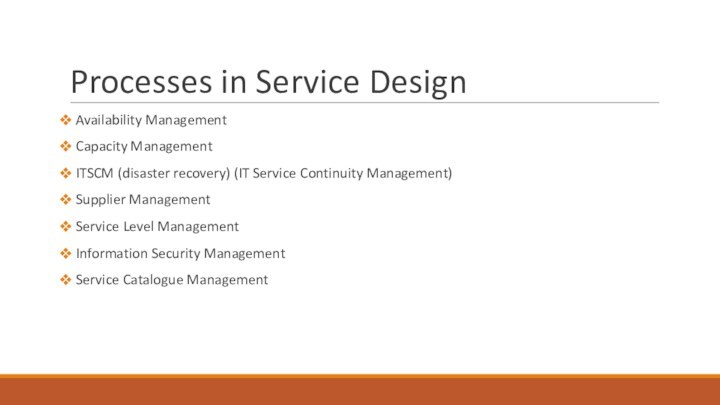
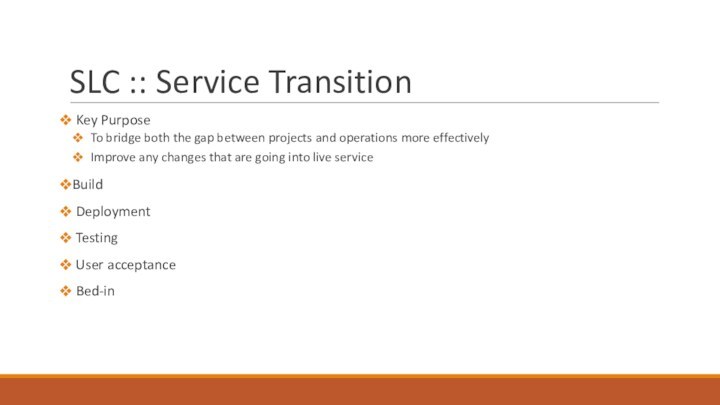
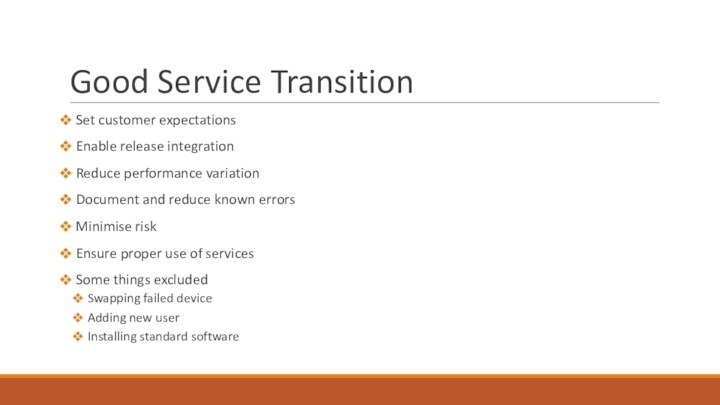
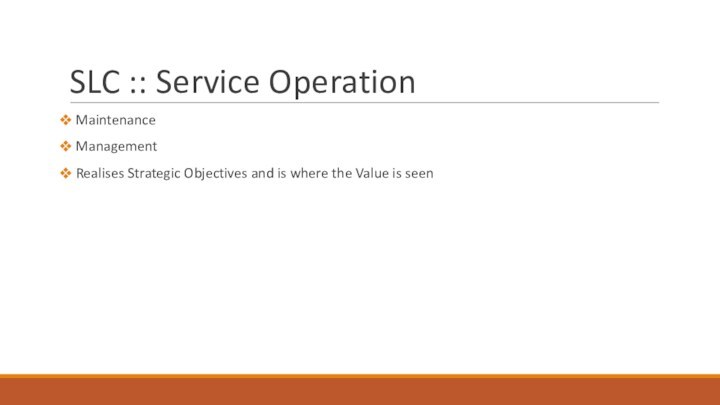
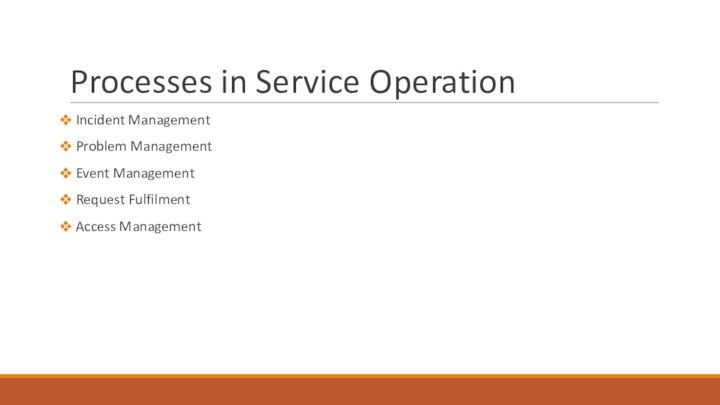
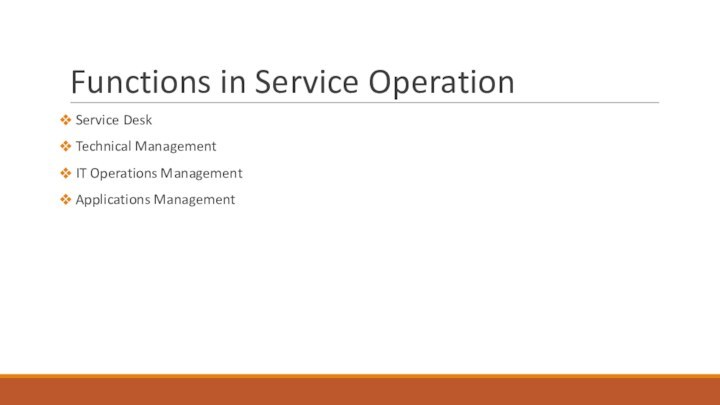
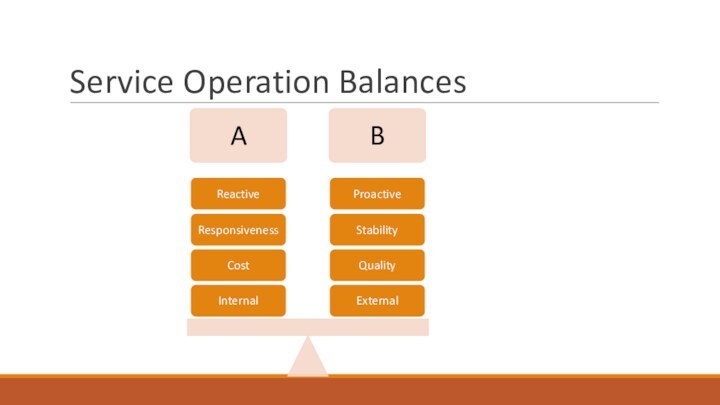
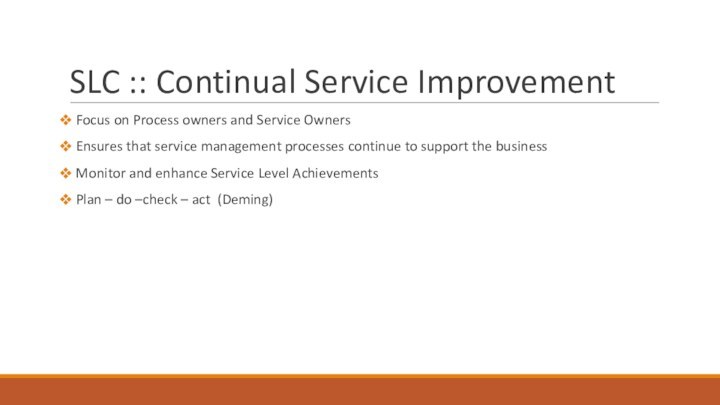
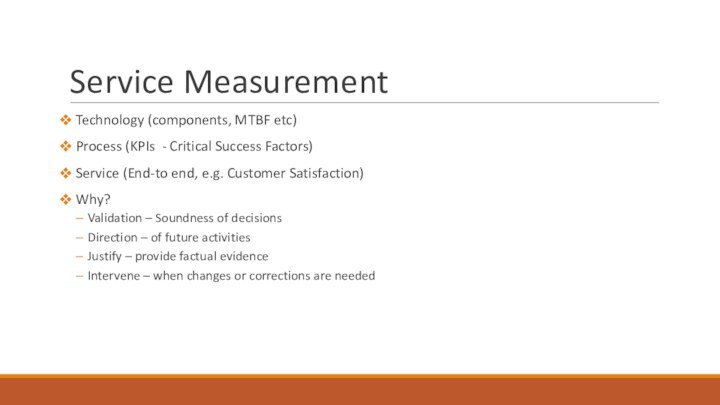
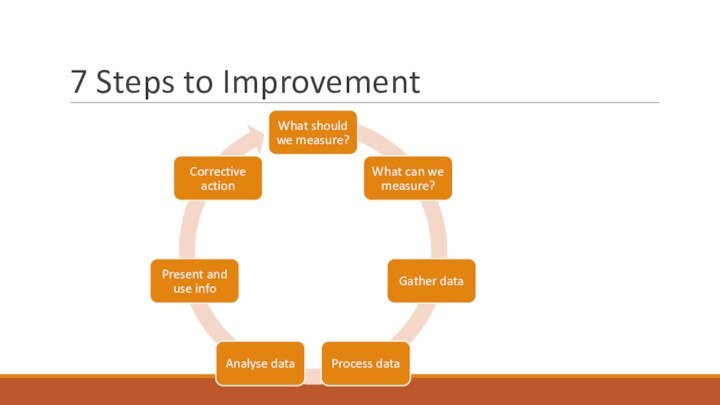
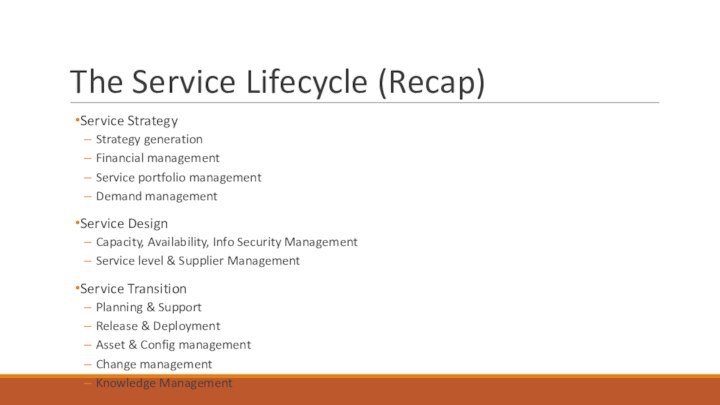
Слайд 3
What is ITIL? - I
Systematic approach to
high quality IT service delivery
Documented best practice for
IT Service ManagementProvides common language with well-defined terms
Developed in 1980s by what is now The Office of Government Commerce
Not legally bounding, only recommendations
Слайд 4
What is ITIL? - II
ITIL (IT Infrastructure
Library) provides a framework of best practice guidance for
IT service management.The most widely accepted approach to IT Service Management in the word.
A framework for IT governance
Слайд 5
What about V3?
ITIL started in 80s.
40 Publications!!!
V2 was introduced in 2000-02
8 Books!!
Focuses on what should be done.V3 was introduced in 2007
Simplified and clear guidance on how to provide service?
5 Books
Focuses on tactical and operational guidance
Слайд 6
5 Core Books
Service Strategy
Service Design
Service Transition
Service Operation
Continual Service
Improvement
Слайд 7
Why ITIL Service Management?
Best Practice
Non-Proprietary/Non-Prescriptive
Guidance,
not regulations
Innovative
Слайд 9
Benefits of ITIL to the IT Provider
Service Management
Best Practices
Lifecycle Approach
Better management of service
Better Integration among
Business Services
IT
ServicesIT Functions
Focus on Value of Service
Слайд 10
Benefits of ITIL to the Customer
Focus on Business
Needs
Service Aligned to Business Activity
Services Designed to Meet Business
Requirements
Слайд 12
Key Concepts :: Service
Service delivers value to
customer.
How?
by facilitating outcomes customers want to achieve
without ownership of the specific costs and risksExample
By providing continuous support to customer 24/7 without him/her worrying about the customer support staff is ill or sick
Слайд 13
Key Concepts :: Service Level
Measured and reported
achievement against one or more service level targets.
Examples
RED = 1 Hour Response 24/7AMBER = 4 Hour Response 8/5
GREEN = Next Business Day
Слайд 14
Key Concepts :: Service Level Agreement (SLA)
Written and
negotiated agreement between Service Provider and Customer
Documented agreed
service levels and costsViolation of SLA called Service Level Agreement Violation (SLAV)
SLAV can lead to penalty on part of Service Provider
Слайд 15
Key Concepts :: Configuration Management System (CMS)
Tools and
databases to manage IT service provider’s configuration data
Contains Configuration
Management Database (CMDB)Records hardware, software, documentation and anything else important to IT provision
Слайд 16
Key Concepts :: Release
Collection of hardware, software, documentation,
processes or other things require to implement one or
more approved changes to IT Services.Mostly originates based on the request of change from the user/customer.
Слайд 17
Key Concepts :: Incident
Unplanned interruption to an IT
service or an unplanned reduction in its quality.
Example
Unavailability of
e-mail server due to unplanned/unanticipated power outage
Слайд 18
Key Concepts :: Work Around
Reducing or eliminating the
impact of an incident without resolving it
Example
Providing slow speed
internet when the optical fibre is cut and cannot be repaired immediately.
Слайд 20
Key Concepts :: Resources
Resources
Things you buy or pay
for
IT Infrastructure, people, money
Tangible Assets
Слайд 21
Key Concepts :: Capabilities
Capabilities
Things you grow
Ability to carry
out an activity
Intangible assets
Transform resources into Services
Слайд 23
Service
Customer
Transfer costs and Risks
Retains focus and accountability
for outcomes
Service Provider
Takes on Costs and Risks
Responsible
for the means of achieving outcomes
Слайд 24
What is Service Management?
A set of specialized organizational
capabilities for providing value to customers in the form
of servicesProcesses, methods, functions & roles, activities for service provider to use
Слайд 25
Capabilities
Resources
Service Assets
Services
Customer Assets
Business Outcomes
Performance
Value
Слайд 26
4 Ps of Service Management
People – skills, training,
communication
Processes – actions, activities, changes, goals
Products – tools, monitor,
measure, improvePartners – specialist suppliers
People
Processes
Partners/ Suppliers
Products/ Tech
Слайд 28
Service Life Cycle (SLC)
To sustain high levels
of business performance, organisations need to offer competitive products
and services that customers will value, buy and use.Economic climate and market place is rapidly changing.
Quick adaptation is vital.
ITIL Service Life Cycle helps in quick adaptation.
5 distinct life cycle stages
Service Strategy
Service Design
Service Transition
Service Operation
Continual Service Improvement
Слайд 30
SLC :: Service Strategy
Purpose
Ensuring that
our strategy is defined, maintained and then implemented.
What
are we going to provide?Can we afford it?
Can we provide enough of it?
How do we gain competitive advantage?
Perspective
Vision, mission and strategic goals
Pattern
Must fit organisational culture
Слайд 32
SLC :: Service Design
Purpose
Converting the strategy into
reality, through the use of a consistent approach to
the design and development of new service offeringsHow are we going to provide it?
How are we going to build it?
How are we going to test it?
How are we going to deploy it?
Слайд 33
Processes in Service Design
Availability Management
Capacity
Management
ITSCM (disaster recovery) (IT Service Continuity Management)
Supplier
ManagementService Level Management
Information Security Management
Service Catalogue Management
Слайд 34
SLC :: Service Transition
Key Purpose
To bridge
both the gap between projects and operations more effectively
Improve any changes that are going into live serviceBuild
Deployment
Testing
User acceptance
Bed-in
Слайд 35
Good Service Transition
Set customer expectations
Enable release
integration
Reduce performance variation
Document and reduce known errors
Minimise riskEnsure proper use of services
Some things excluded
Swapping failed device
Adding new user
Installing standard software
Слайд 36
SLC :: Service Operation
Maintenance
Management
Realises Strategic
Objectives and is where the Value is seen
Слайд 37
Processes in Service Operation
Incident Management
Problem Management
Event Management
Request Fulfilment
Access Management
Слайд 38
Functions in Service Operation
Service Desk
Technical Management
IT Operations Management
Applications Management
Слайд 40
SLC :: Continual Service Improvement
Focus on Process
owners and Service Owners
Ensures that service management processes
continue to support the businessMonitor and enhance Service Level Achievements
Plan – do –check – act (Deming)
Слайд 41
Service Measurement
Technology (components, MTBF etc)
Process (KPIs
- Critical Success Factors)
Service (End-to end, e.g. Customer
Satisfaction)Why?
Validation – Soundness of decisions
Direction – of future activities
Justify – provide factual evidence
Intervene – when changes or corrections are needed


